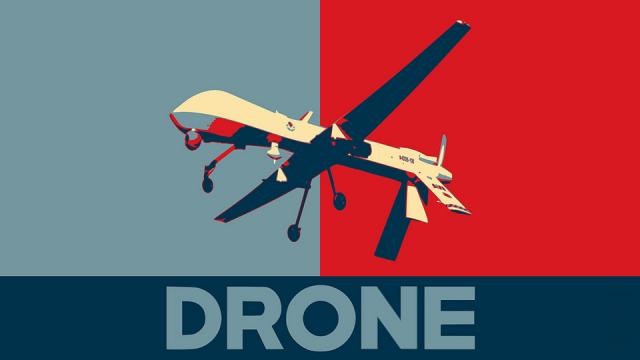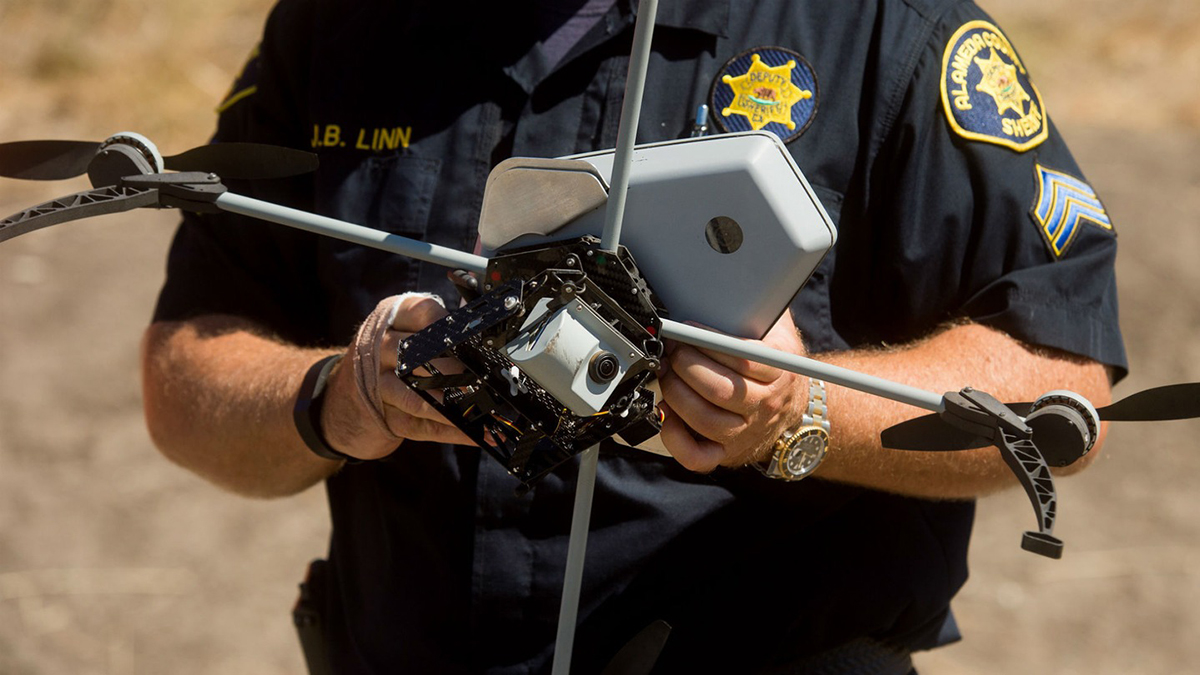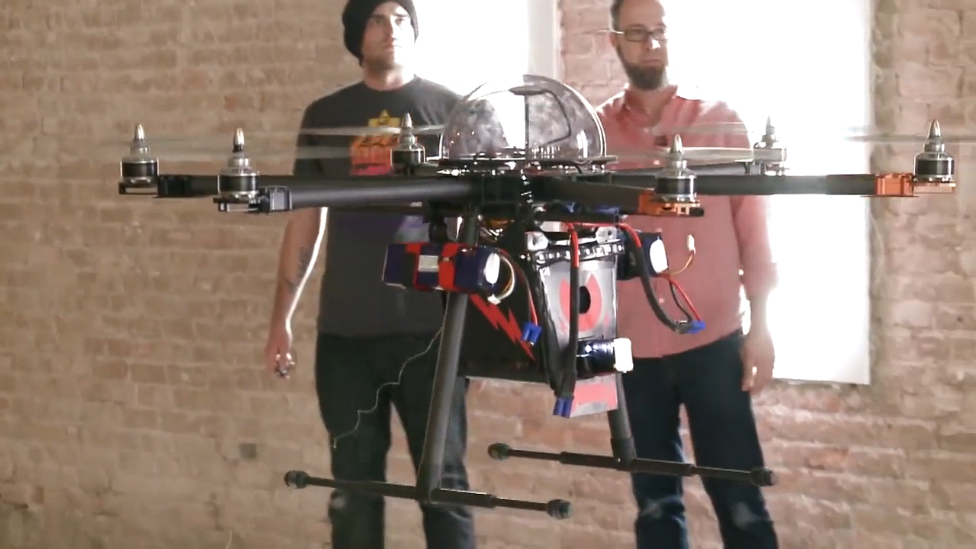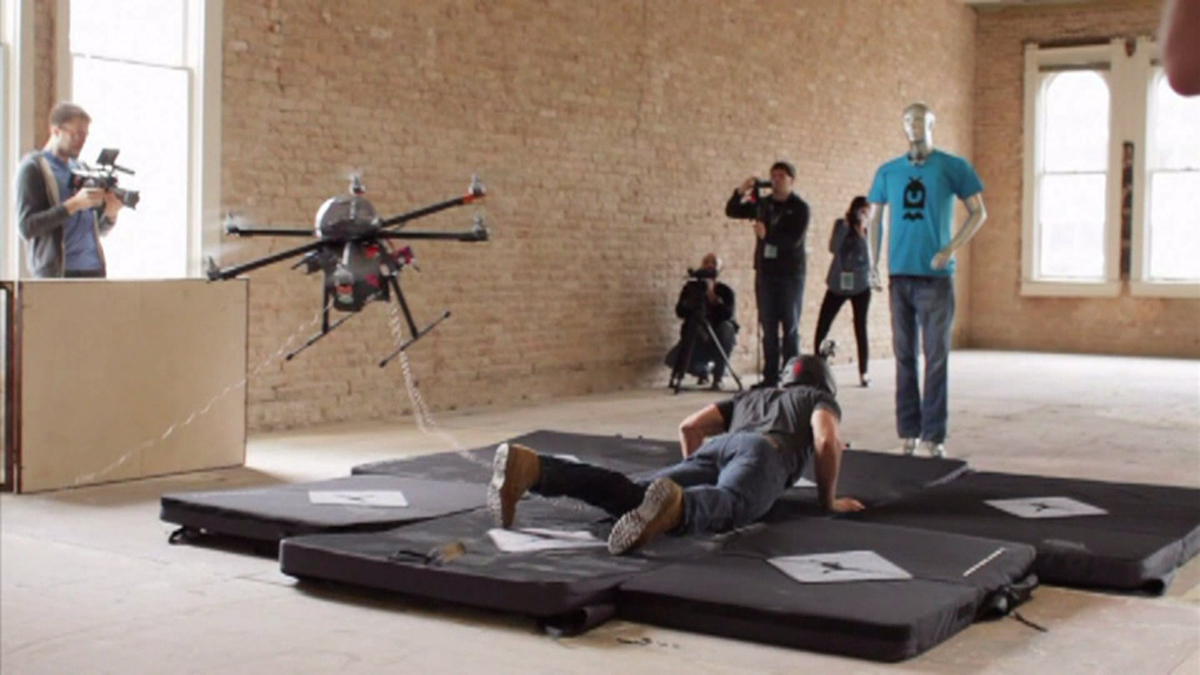
The good news is that a new law that was passed this year in North Dakota requires police in the state to obtain a court order before using a drone for surveillance.
The bad news, however, is that according to an August 27 Ars Technica article, the same legislation allows local police to equip drones with non-lethal weapons such as tasers and utilize them for law enforcement:
Legal experts are very concerned that a new North Dakota law which allows law enforcement drones to be armed with so-called less-than-lethal weapons – including stun guns and beanbag rounds – could be highly problematic. The law, however, explicitly forbids lethal weapons.
Among other reasons, such weapons have been shown that they can, in fact, kill people.
According to research by The Guardian, 39 Americans have died this year alone at the hands of police wielding a Taser. Meanwhile, the Associated Press reported that more than 20 North American cities are pursuing large silicone-based projectiles as yet another alternative weapon.
North Dakota is believed to be the first state in the union to allow such weapons aboard state and local police drones.
In a grim irony, the use of drones for tasering people does not require a court order, while surveillance, which will not physically harm an individual, does. It's a positive development to require the police to seek court approval to spy on people, but not when the tradeoff is the unsupervised use of painful and potentially deadly "non-lethal" weapons.
Ars Technica quotes Brian Owsley, a former federal judge and current law professor at the University of North Texas, objecting to the new law that took effect in August:
"Drones, like stingrays [or cell-site simulators], were designed for military applications and are now being sold by manufacturers for use by local law enforcement because they need to expand their market," he told Ars by e-mail.
"I question in what circumstance there would be a need for a use of force administered by a drone," Owsley said.
Owsley makes a couple of points worth expanding upon.
Firstly, he asserts that drone use expansion is due, in large part, to the need of military drone manufacturers to create a new market for their product. This exemplifies the dangers of an unrestrained "free market" approach to selling weaponry. Because a military-industrial-complex company wants to increase its profit, it creates a perceived need for drones and "non-lethal" weaponry where none exists. In doing so, it exposes the public to an increased danger of the use of excessive force by police, now in the form of unmanned technology attacking from the sky.
Secondly, Owsley implies that because local police drones with "non-lethal" weapons are unnecessary, cops would probably use them when there is no need to do so. One can also speculate that police officers might find it more convenient to “patrol” their beats from a room with a joystick and drone camera monitor than in a squad car.
North Dakota State Rep. Rick Becker, who originally sponsored the bill with the intention of it focusing mostly on the requirement of a surveillance warrant, was allegedly horrified when the law enforcement lobby – goosed on by the drone industry – hijacked the legislation.Representative Becker told Arts Technica that he worries about the desensitization that such a drone policy will create:
The gist of why I don't want the non-lethals allowed is the decision to use force on another citizen, the normal morals and process of thinking goes out the window when it's like you're playing a video game. It's dehumanized, it's depersonalized.
Mission creep is naturally a major concern here. Will the next step be permitting local law enforcement to use lethally armed drones? We all know where that ends up. Just ask the relatives of the estimated 2,500 people who have been killed by drone strikes authorized by President Obama.
3 WAYS TO SHOW YOUR SUPPORT
- Log in to post comments














